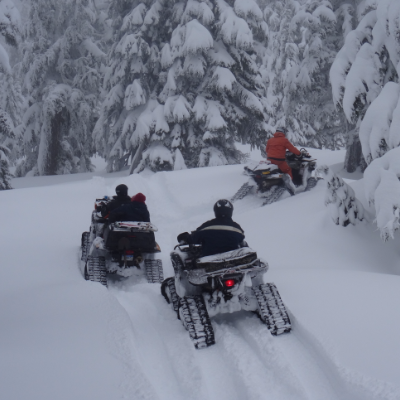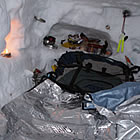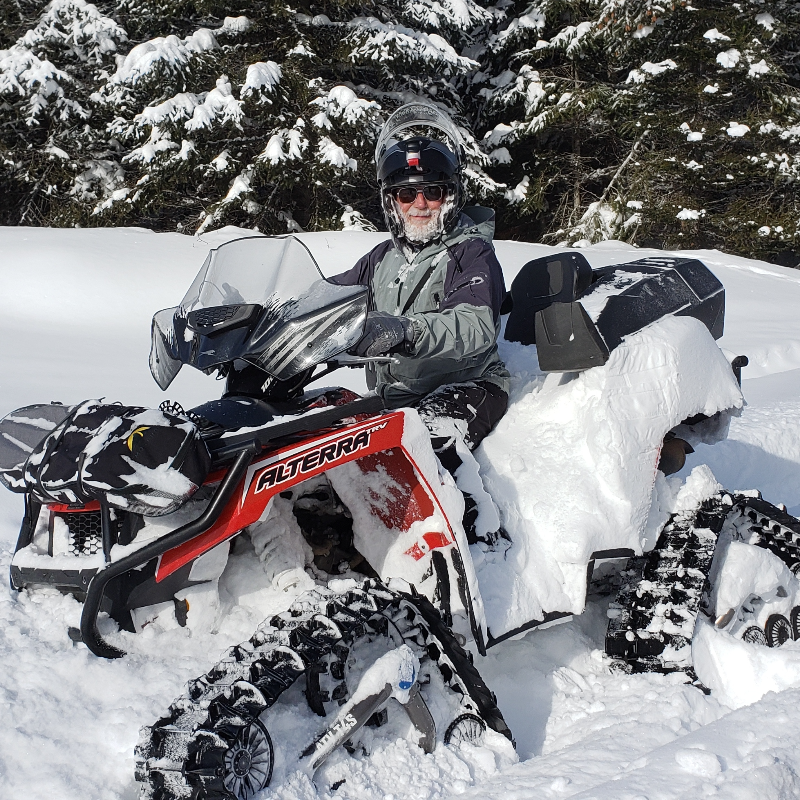Without training it is very easy to miss nature's warning signs. Would it be rational to drive on a busy city street and not know what a red octagon means? Blowing through a stop sign doesn't guarantee you will be in an accident, but it certainly increases your chances of a serious collision. Common sense isn't common--it is learned. We simply don't know what we don't know.
When I first started riding in the mountains with Randy, I was a bit of a gambler. I knew that avalanches were a possibility, but just rationalized that the odds of a slope releasing were within my acceptable level of risk. At that point in time I felt that the benefits of riding outweighed the danger.
I grew up with a pretty high tolerance for risk. My dad might have had something to do with it. More than once I heard him comment that "families should be large. If you only have two kids and one of them dies, you've just lost 50 per cent of your calf crop." If Dad had his way I would have had a dozen siblings, I'm sure.
As it was, the five of us kids were pretty much unrestricted in our activities. We understood consequence and for the most part took calculated risks and despite all our crazy activities we lived. We gained a few scars and broken bones, but also lots of stories to tell.
In 1998 I signed us up for our first avalanche course with a fair amount of skepticism. “Some low-risk-tolerance instructor is probably going to tell us that our sport is irrational and that to stay safe we should just stay off the steep stuff,” I thought. “It'll just be another one of those safety tickets that we put in our pockets and forget about.”
In reality, I was pretty humbled to find a fellow sledder teaching the program, and he very effectively challenged my way of thinking. Basically, his words gave me a big kick in the pants!
I learned there are combinations of snowpack, terrain and travel habits that can get us in to trouble.
Could I recognize these combinations without training?
Maybe I could recognize the obvious ones, but was I really willing to risk my life or my friend's life on my current level of knowledge?
Making life and death decisions is not based on “average” or “what normally happens.” Avalanche decisions are made while analyzing what is UNUSUAL in the snowpack, weather or terrain TODAY. I recognized that I didn't know what to look for and that freaked me out.
It was at that point that I woke up and realized that we had been pretty damn lucky but that we owed it to ourselves, our families and our riding partners to lose the cowboy attitude.
Click here to complete the article and get the answers to the multiple choice questions below.
While riding you arrive to find a size two slab avalanche has ripped out part of the hill on the main trail to the upper cabin. What course of action would be optimal?
There are many factors to consider when assessing snow stability. When considering the weather, what time period is responsible for the formation of a large, deep slab avalanche weakness?
This is the first instalment of a five-part email series. Click here to register for this free online training opportunity. Test it out and give us your feedback. Answers and discussion will pop up once you submit your guesses.
You may not agree with some of our conclusions, so take advantage of the comment box below to start a debate.






